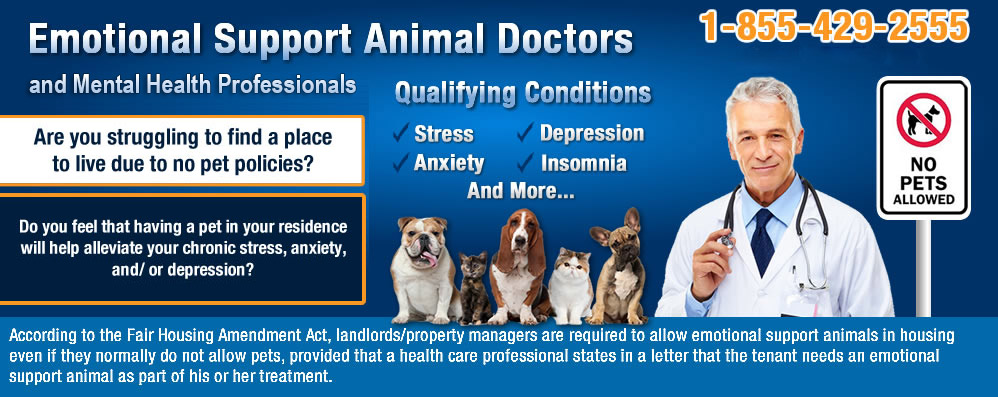Emotional Support Animals vs. Service Dogs
Emotional support animals (ESAs) and service animals are very different in regards to their duties and the laws that regulate them and define their privileges.
ESA vs Service Animal Laws
While emotional support animals and service animals are covered by federal statute, they are specifically and individually covered by different laws.
Emotional support animals are governed by the Air Carrier Access Act (ACAA) and the Fair Housing Act (FHA). The ACAA allows people to fly with their ESA in the cabin of commercial airplanes. The FHA allows people to live with their ESA in housing that has a “no pet” policy. Both laws prohibit charging extra for the ESA access.
Service animals are governed by the American with Disabilities Act (ADA). The ADA, which protects people with a disability from discrimination, allows for a service animal to accompany their handler into a wide range of public locations.
Types of Animals
Although the most popular ESAs are dogs and cats, any animal that offers companionship and comfort to someone with an emotional or psychological disability can be an ESA. There are people with emotional support birds and reptiles as well as mammals, such as dogs, cats, rabbits, pigs and ferrets.
The ADA only recognizes dogs and miniature horses as service animals.
Training Requirements
Training is not an ESA requirement. The just need to supply the comfort and companionship that comes naturally to them. ESAs should, however, have basic obedience and toilet training.
Service animals are required to have specialized training to help a person with a disability do something that they are not able to do on their on. This training is typically rigorous, extensive and handled — or overseen — by a professional trainer. Examples of service animals include:
- Guide/Seeing Eye Dogs
- Hearing/Signal Dogs
- Sensory Signal/Social Signal Dogs
- Psychiatric Service Dog
- Seizure Response Dogs
What About Therapy Dogs?
Therapy dogs are also highly trained, but they are typically taught to be socially adjusted to many people as opposed to the typical one-on-one relationship of a service dog. Although therapy dogs are typically deployed in the community at places such as schools, hospitals, and rehabilitation centers, they are not covered by either the ADA, ACAA, or FHA, so they do not have the same access as ESAs or service animals.
Identification
When entering a public space with your service animal, you are not required to present special identification. If asked, you only need to verbally confirm that your service animal is a service animal. The ADA states that you can only be asked two questions:
- Is your service animal required because of a disability?
- What work has your service animal been trained to perform?
When bringing your ESA onto an airplane or into housing where you live but has a no pet policy, you need an official ESA letter. In both situations, it is suggested that you check with the airlines or the landlord/property manager prior to showing up with your ESA. The airline might have policies that require additional paperwork or restrict certain kinds of animals. The landlord/property manager might not be familiar with the FHA and not react properly to a surprise arrival.
At no time are you required to have ID cards, tags, vests or any other physical identification for your service animal or ESA. Many people, however, choose to have some sort of noticeable ESA identification to indicate that their animal is working. This can reduce questions about the presence of an ESA where people might not expect to see a pet.
Fraud
About half the states in the US currently consider it a crime to falsely claim that you are entitled to be accompanied by a service animal by pretending that you have a disability and/or by misrepresenting your pet as a legitimate service animal. The number of states adopting similar ESA fraud laws is rapidly increasing.
How Do You Get an ESA or Service Dog?
To get a service dog, you must have a disability that limits or prevents you from performing a major life task without help. After confirming this need with their doctor, most people get a dog from a service dog organization. Because of the training necessary, a service animal may cost in the vicinity of $20,000.
To get an emotional support animal, you must have a mental health professional write a proper ESA letter indicating, among other things, that they are treating you for an accepted psychological or emotional disability. Many people work through the process with the DOGtor. Having helped thousands of Americans get their ESAa, the DOGtor is fast, simple, affordable and offers a same-day 100% money back guarantee if you are not approved.













